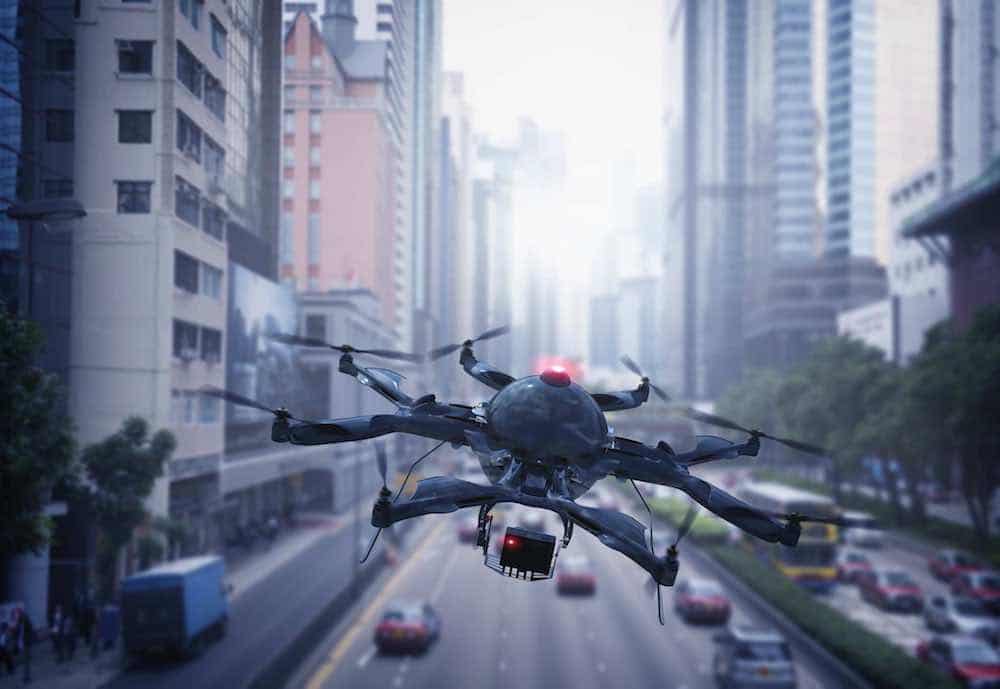It’s exciting to witness the innovation happening in the video surveillance industry. Technological advancements continue at a very fast pace, driven by the desire to get more return of investment from surveillance solutions. The past year has seen a lot of buzz around A.I. and smart video, because both promise to extract more from surveillance video and deliver more capabilities than imagined just a few years ago.
Smart Video – Real-Time Video Analysis
Smart video solutions are expected to have enough intelligence to analyze video in real time and take actions that humans were previously relied upon to do. In some cases, smart cameras may see things a trained human eye cannot easily see.
Not long ago, surveillance video was only captured in case it was needed to be viewed later. Most video was eventually discarded. Today, more surveillance video is being retained because even older surveillance video contains valuable insights that could help make today’s smart video solutions even smarter.
Massive amounts of surveillance video are needed to provide learning datasets for deep learning neural networks, so that smart surveillance cameras can be trained to do more effective real-time video analysis and identify situations and behaviors with high confidence. Ultimately, smart video is being sought to deliver critical assistance to help reduce crime, ensure public safety, and improve operational efficiencies.
Examples of Smart Video Use Cases
Shoplifting reduction: A special camera created with AI capabilities is able to detect potential shoplifters in retail stores based solely on their movement. The cameras use special AI technology to create real-time models of the body position and motion. Deep learning systems then train these smart cameras to analyze these models in real-time and recognize specific body movements that are likely associated with shoplifting. The camera can alert the shopkeeper if it detects suspicious behavior, so the shopkeeper can prevent the crime. In a particular study, this solution is claimed to have reduced shoplifting by about 40%[1].

Detecting violent incidents:Researchers in India and the UK have created a similar working system that uses a drone instead of a smart surveillance camera. Drones can be deployed to monitor locations that aren’t normally covered by an existing surveillance camera. In a similar way that the shop-lifting detection camera uses AI to create models of body position, these researchers used a hybrid deep learning network to model human poses and detect with high probability body motion that is associated with violent behavior. As smarter drones can eventually autonomously detect violent behavior, they could be a vital tool in helping law enforcement identify and remove violent individuals.[2]
New Use Cases Require New Edge Architectures
These use cases illustrate the promises of smart video. But to realize these use cases, smart video requires fundamental changes in architecture, including smarter edge devices and more effective real-time deep learning neural networks that sit closer to the edge devices.
Edge devices are doing more inferencing, based on the deep learning training given to it by deep neural networks. Such edge devices require more advanced and more sophisticated compute and storage capabilities to do this inferencing in real time.
Smart video can still be realized with even less capable edge devices, if they are connected to edge data centers or edge cloud servers that physically sit closer to the edge devices to provide real-time analysis and inferencing. Having these cloud servers sit closer to the edge devices reduces latency and overall network congestion, providing for a more effective smart video solution.
These architectural innovations require innovative storage technology to meet the new and dynamic requirements of these new capabilities.
Enhancement to Western Digital’s Surveillance Storage Portfolio
With the exciting innovation in surveillance and smart video architectures comes the need to provide innovative storage technologies that deliver the needed flexibility, performance, capacity and reliability.
Today, we’re announcing an expansion of our broad portfolio of surveillance storage products and technologies to meet these needs. These additions are intended to enhance our surveillance and smart video offerings, to service both traditional and emerging smart video architectures, and to improve the ability to proactively manage storage from edge to cloud.
The industry’s first 3D NAND UFS-based EFD for surveillance
For the smart video edge, we’re excited to introduce the industry’s first 3D NAND UFS-based EFD for surveillance. The Western Digital iNAND® IX EU312 UFS EFD brings UFS speeds combined with industrial grade high endurance and high capacities. Read speeds of up to 750 MB/s[3]and write speeds of up to 320 MB/s – coupled with advanced NAND flash management – help ensure a robust flexible storage solution for advanced AI-enabled smart video devices. Support for up to 768 TBW provides the very high endurance required for heavy continuous recording workloads.
Expanding Lineup for 4K- and AI-Enabled Video at the Edge
For the additional flexibility of a removable storage design for mainstream surveillance cameras, we are extending our WD Purple® microSD™ card capacity lineup by leveraging our advanced 3D NAND technology. Now with capacities of 32GB, 64GB, 128G and 256GB[4]and with endurance of up to 1000 program/erase (P/E) cycles, the new lineup of WD Purple microSD cards provide even more flexibility, performance, and capacity to continuously capture high resolution surveillance video. The wide operating temperature range and card health monitoring capability help ensure confident and long-lasting operation in most indoor or outdoor installations, especially in less accessible locations.
Proactive Storage Management – Western Digital Device Analytics
To help ensure optimal operation of Western Digital storage technologies in surveillance and smart video edge devices and edge servers, we introduce Western Digital Device Analytics (WDDA). Supported by Western Digital’s WD Purple hard drive, WD Purple microSD cards, and the iNAND IX EU312 UFS EFD, WDDA provides system integrators and end users with unprecedented ability to proactively manage multiple storage technologies within their surveillance systems – whether the DVR, NVR or the camera. Storage devices that support WDDA work with specialized software in the host systems to help maintain optimal storage operation. Should abnormal conditions arise, WDDA helps users pre-empt potential issues by providing recommended actions to restore the system to normal operation and help reduce total cost of operation (TCO) associated with system downtime and support costs.
Western Digital’s expanded portfolio of storage products and technologies represents an unprecedented breadth of storage devices and management technologies for surveillance and smart video edge solutions. From edge to edge server, we provide an unmatched portfolio of storage products and technologies that deliver the right combinations of performance, capacity and reliability to meet the unique needs of today’s surveillance solutions and tomorrow’s AI-enabled smart video systems.
For more information on Western Digital’s surveillance storage portfolio, please visit http://www.wdc.com/edge-to-core
Forward-Looking Statements
Certain blog and other posts on this website may contain forward-looking statements, including statements relating to expectations for our product portfolio, the market for our products, product development efforts, and the capacities, capabilities and applications of our products. These forward-looking statements are subject to risks and uncertainties that could cause actual results to differ materially from those expressed in the forward-looking statements, including development challenges or delays, supply chain and logistics issues, changes in markets, demand, global economic conditions and other risks and uncertainties listed in Western Digital Corporation’s most recent quarterly and annual reports filed with the Securities and Exchange Commission, to which your attention is directed. Readers are cautioned not to place undue reliance on these forward-looking statements and we undertake no obligation to update these forward-looking statements to reflect subsequent events or circumstances.
[1] https://japantoday.com/category/features/kuchikomi/vigilant-‘ai-guardman’-system-aims-to-cut-shoplifting-losses
[2] https://arxiv.org/abs/1806.00746
[3]One megabyte per second (MB/s) = one million bytes per second. Based on internal testing; performance may vary depending on your hardware and software components and configurations.
[4]As used for storage capacity, one gigabyte (GB) = one billion bytes. Total accessible capacity varies depending on operating environment.



